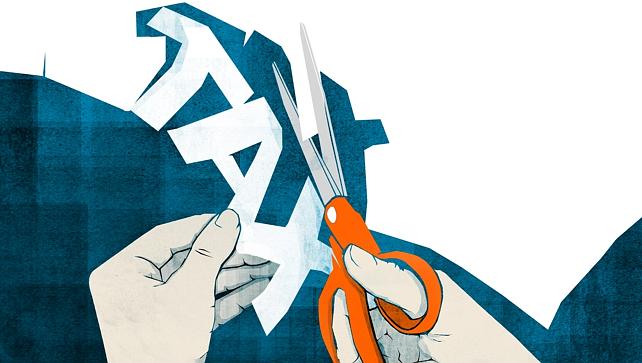Joe Hockey’s budget was crafted like a national pledge, where all Australians have been asked to put a shoulder to the wheel. But high-income earners know well enough they’ll always be expected to share a greater portion of their pay than anyone else.
A three-year debt reduction levy will take 2 per cent of taxable income above $180,000, starting on July 1.
To the wealthy, the levy is just another tooth on the ratchet, pushing the top tax rate from 47 per cent to 49 per cent. If there’s a way to avoid it, why not?
Some strategies to minimise the effect of the levy will already be well known to taxpayers.
“This is clearly one of those years where there is the incentive to bring income forward and defer deductions and donations,” says HLB Mann Judd taxation partner Peter Bembrick.
There are many other methods of shaving back the tax, but some are more arcane and in most cases they should be handled with care.
Contribute more to superannuation
Employees who have no choice but to receive income in their own name have fewer options when it comes to reducing their taxable income than business owners, but if they’re not already making extra contributions into superannuation, now’s a good time to start.
Income up to a limit of $25,000 diverted into superannuation is taxed at 15 per cent, so anyone in the 49 per cent tax bracket which will exist from July 1 will keep an extra 34¢ in every $1 earned, if they sacrifice that salary until retirement. It’s the easiest strategy of all.
Use negative gearing
The budget contained no attack on negative gearing, so the green light still says “go” on borrowing. Investors have to make up their own minds about the risks involved in geared investments, and as tax payers negative gearing introduces a tension between the loss which can be claimed as a deduction and the capital gains tax which awaits at the other end, should the investment be fruitful.
“That’s why family trusts can be quite good,” Bembrick says. “Longer term, if you’re going to have capital gains by having it in the family trust, you’ve got that flexibility to shoot it off to lower income beneficiaries.”
Investors must make personal choices on whether negative gearing is a prudent way to claw back a levy which will expire on June 30, 2017.
Place investments in the name of a lower-earning spouse
Tread carefully. If your motivation for moving assets around is to avoid tax, the Tax Office will not be impressed. “That’s just setting yourself up for trouble,” says Pitcher Partners executive director Theo Sakell.
Shares or investment properties transferred between spouses trigger capital gains tax, the cost of which might outweigh any benefit gained. Talk to a tax adviser about this one. It might be time to think about setting up a family trust.
Fringe benefits tax
If there was an anticipation that high-income earners would fiddle their salary packages to avoid the levy, the government plugged that leak by increasing the fringe benefits tax rate. But there is still some room to find an optimal outcome if you can salary package items which are taxed concessionally under the FBT rules, Sakell says.
“Cars for higher income earners can still produce marginal salary packaging benefits,” he says. “People who might be thinking about getting a new car won’t necessarily be put off by this. Their decision will be pretty similar to what it was under the current tax rates.”
The levy precedes the next FBT year, which begins on April 1, leaving a nine-month window in which it will be possible to salary package without incurring the higher FBT rate. If you want to get the most out of reweighting your salary package you should get moving, Bembrick says.
Business owners
Australians who own businesses – and there are more than a million of them – can choose to pay themselves a lower salary or forgo pay in dividends and allocate it to capital expenditure if they want to minimise the amount they pay in personal tax.
It’s unlikely sole traders or partnerships will decide to incorporate their businesses to avoid the levy, Sakell says, unless they are growing strongly. “The ongoing compliance costs have to be factored in,” he says.
Source: http://www.afrsmartinvestor.com.au/p/market-intelligence/how_to_beat_the_debt_levy_nTWyskVKPQR3samE8nqwaJ


